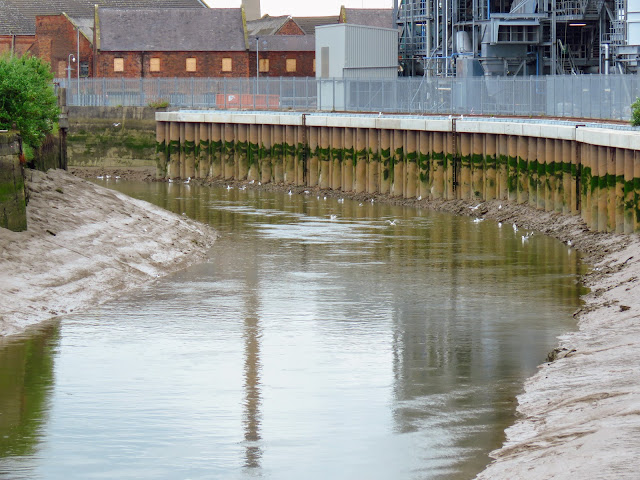In this third instalment of the series, showcasing the unsung biodiversity of the urban river Hull, I tackled the most urban stretch, which crosses the Wilcolmlee Industrial estate. The first half of the walk has very limited access to the river, and the first port of call was Wilmington Bridge. The tide was almost at its lowest point and I scanned the exposed muddy banks upstream hoping for waders. A few Lesser Black-backed gulls were preening on the river wall, presumably after bathing in the river.
A Lesser Black-back gull having a dip.
A line of Feral Pigeons sat on the wooden beams by the bridge, looking particularly stunning, so I couldn't stop myself taking their portraits.
I moved to the south side of the bridge making sure to avoid the traffic, yet again controlled by a temporary traffic light system due to some works. I scanned the banks and walls, looking at the spot used by the Redshank roost. But, no, it's a bit early for Redshanks to be back from their breeding grounds.
On the steep bank opposite there were some intriguing tracks. I took some photos and later confirmed that they were otter tracks! The first signs of this species on the Sculcoates patch! Otters made a comeback to the River Hull in the early 2000s (possibly from a small local population as sightings never seem to stop in the upper reaches of the river Hull, as described in this Tophill Low blog post), but about a decade ago their presence was noted throughout the river, including within the city of Hull (Otter Survey of 2009-2010). In the last few years they have been spotted several times in the river and drains within the city boundary. The nation-wide recovery of the Otter was a result of pesticide bans, protection of the species and improvements in water quality resulting in recovering fish populations. I had a glimpse of one or two Otters playing in the Barmston drain last year. Together with Water Vole (which sadly I still haven't seen at Sculcoates) Otter was top in my mammal hit list, so I'm very pleased about this even if it's only a track!
Otter tracks
I carried on along Wilcolmlee. I popped in a car park allowing a view of some of the banks. This section is just upstream of the Energy Works Hull plant, and has some old wooden defences topped with naturally regenerated vegetation.The next stretch allowing a view is the location of the raised bridge at Scott Street. I had a little detour to the disused cemetery behind the Charterhouse. A Sparrowhawk was displaying high. House Martins were flying over the river.
To finish the walk, I go to the half-tide basin at Victoria Dock. I'm suprised to see House Martins collecting mud. I check their departure direction and then try to find their nests. I am very disappointed to see that several nests have been knocked over, which is illegal, as House Martin nests are protected by law.
This coot has an amazing nests with several layers.
At Queens Gardens I watch how a Herring Gull got a fish from one of the ponds and started eating it while its partner watched on patiently.
























No comments:
Post a Comment